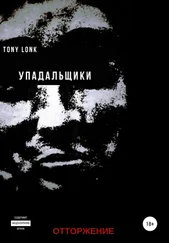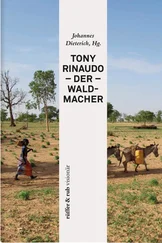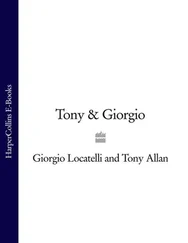In western Europe only Southern Italy saw anything comparable to the dramatic changes further East. Sweeping reform laws in 1950 announced the redistribution of estate land across Sicily and the Mezzogiorno , following land seizures and occupations in Basilicata, the Abruzzi and Sicily. But for all the fuss, little changed—much of the land redistributed from the old latifundia lacked water, roads or housing. Of 74,000 hectares redistributed in Sicily after World War Two, 95 percent was ‘marginal’ or inferior land, unsuited to cultivation. The impoverished peasants to whom it was offered had no money and no access to credit; they could do little with their new holdings. The land reforms in Italy failed. Their stated goal—the solution of the ‘Southern Question’—would only be met a decade later, and then only in part, when the surplus peasantry of the South abandoned the soil and went in search of work to the booming northern cities of the Italian ‘miracle’.
But southern Italy was a hard case. New legal rights for tenant farmers in France and elsewhere gave them an incentive to invest in their smallholdings, while innovative credit systems and rural banks made it possible for them to do so. State-subsidized farm price support systems helped reverse the decades-long decline in agricultural prices by encouraging farmers to produce as much as possible while guaranteeing to purchase their output at a fixed, minimum rate. Meanwhile the unprecedented post-war demand for labour in the cities drained off surplus workers from poorer rural districts, leaving a more efficient farming population with fewer mouths to feed.
The political dimensions of the agrarian problem were indirectly addressed in the broader package of political reforms introduced in the first post-war years. Many of these were constitutional in nature, once again completing the unfinished business of 1918. In Italy, France and Belgium women finally secured the vote. In June 1946 the Italians voted to become a Republic, but the margin was narrow (12.7 million votes in favour of abolishing the monarchy, 10.7 million for retaining it) and the country’s historical divisions were if anything further exacerbated by the outcome: the South, except for the region of Basilicata, voted overwhelmingly for the king (by a ratio of 4:1 in Naples).
The Greeks, in contrast, voted in September 1946 to retain their monarchy. Belgians kept theirs, too, but removed the incumbent, King Leopold III, as punishment for his cooperation with the Nazis. This decision, taken under public pressure in 1950 against the wishes of a slight majority of the population, sharply divided the country along communal and linguistic lines: francophone Walloons voted to remove Leopold from the throne, whereas 72 percent of Dutch-speaking Flamands expressed a preference for letting him stay. The French had no monarch on whom to vent their memory of wartime humiliation, and merely voted in 1946 to replace the disgraced Third Republic with a numerical successor. Like the German Basic Law of 1949, the constitution of the Fourth Republic was designed to eliminate so far as possible the risk of any surrender to authoritarian or caesarist sirens—an aspiration which was to prove singularly unsuccessful.
The Provisional or Constituent Assemblies which promulgated these post-war constitutions, proposed popular referenda on controversial topics and voted major institutional reforms were mostly canted to the Left. In Italy, France and Czechoslovakia Communist Parties did well after the war. In the Italian elections of 1946 the Partito Communista Italiano (PCI) obtained 19 percent of the vote; the Parti Communiste Français (PCF) won 28.6 percent of the vote in the second French elections of that year, its best result ever. In Czechoslovakia, in the free elections of May 1946, the Communists secured 38 percent of the national vote (40 percent in the Czech lands). Elsewhere Communists did not fare so well in free elections, though better than they would ever manage again, ranging from 13 percent in Belgium to just 0.4 percent in the United Kingdom.
The Communists’ initial political leverage in western Europe came from their association with Socialist parties, most of which before 1947 were reluctant to break with the Popular Front-style alliance that had re-formed itself in the resistance movements. Socialist parties in France and Italy did almost as well as the Communists in initial post-war elections and considerably better in Belgium. In Scandinavia the Social Democrats vastly outscored any other party, obtaining between 38 and 41 percent of the votes in Denmark, Norway and Sweden in elections held between 1945 and 1948.
Nevertheless, outside Britain and the Nordic countries the ‘old Left’ of Communists and Socialists was never able to govern alone. In western Europe the balance was always held, and in many cases dominated by, a new political animal, the Christian Democratic parties. Catholic parties were familiar in continental Europe—they had long thrived in the Netherlands and Belgium. Wilhelminian and Weimar Germany had a Catholic Center Party and the conservative wing of Austrian politics has long been closely bound up with the (Catholic) People’s Party. Even ‘Christian Democracy’ itself was not an altogether new idea—its origins lay in early-twentieth-century Catholic reformism and Catholic movements of the political center that tried without success to make their way in the turbulent years following World War One. But after 1945 the situation was quite different and wholly to their advantage.
In the first place, these parties—especially the Christian Democratic Union (CDU) in West Germany, the Christian Democrats (DC) in Italy and the Popular Republican Movement (MRP) in France—now had a near-monopoly of the Catholic vote. In 1945 Europe, that still mattered a lot: the Catholic vote was still heavily conservative, especially on social questions and in regions of high Catholic practice. Traditional Catholic voters in Italy, France, Belgium, the Netherlands and southern and western Germany would rarely vote Socialist and almost never Communist. But, and this was the peculiarity of the post-war era, even conservative Catholics in many countries often had no choice but to vote Christian Democrat, despite the reformist bent of Christian Democrat politicians and policies, because conventional right-wing parties were either under a shadow or else banned outright. Even non-Catholic conservatives turned increasingly to the Christian Democrats, as a bar to the ‘Marxist’ Left.
Secondly, and for related reasons, Christian Democrat parties were the major beneficiaries of women’s votes—in 1952 some two-thirds of practicing Catholic women in France voted for the MRP. No doubt the influence of the pulpit played a role. But a large part of the Christian Democratic parties’ appeal to women lay in their programme. In contrast to the lingering insurrectionary undertone to even the most domesticated Socialist and Communist rhetoric, prominent Christian Democrats—Maurice Schumann and Georges Bidault in France, Alcide de Gasperi in Italy and Konrad Adenauer in the Federal Republic—always emphasised reconciliation and stability,.
Christian Democracy avoided class-based appeals and emphasized instead social and moral reforms. In particular, it insisted upon the importance of the family , a properly Christian theme with significant policy implications at a time when the needs of single-parent, homeless and destitute families had never been greater. Thus Christian Democratic parties were ideally placed to capitalize on virtually every aspect of the post-war condition: the desire for stability and security, the expectation of renewal, the absence of traditional right-wing alternatives and the expectations vested in the state—for in contrast to conventional Catholic politicians of an earlier generation, the leaders of Christian Democratic parties and their more radical younger followers had no inhibitions about enrolling the power of the state in pursuit of their goals. If anything, Christian Democrats of the first post-war years saw free-market liberals rather than the collectivist Left as their main opponents and were keen to demonstrate that the modern state could be adapted to non-socialist forms of benevolent intervention.
Читать дальше












